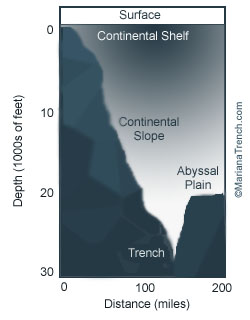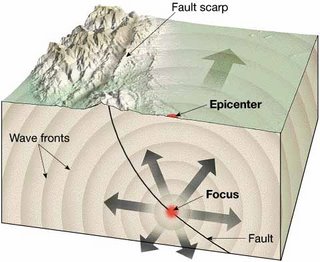
Have I told you how much I love astronomy. I think that the expanse of space is spectacular. We are so small and tiny compared to what is all out there, and to think how much smaller molecules or even atoms, (or even the quarks that make up the atoms for that
matter, no pun intended) they are compared to us. How big is the Earth? Well, if you were going the speed of light, which is 300,000,000 meters in one second, you could travel around the earth a little over seven times in one second. Light traveling from the sun to the Earth takes about eight minutes. That's quite the distance. Jupiter's orbit is about 5 times the diameter of Earth's orbit around the sun. Now, that you have a sense of scale, check out the size of that star in the picture (ignore the "click to enlarge"). That is a picture of Betelguese, a red giant star in the constalation Orion. The diameter of the star nearly exceeds the diameter of Jupiter's
orbit around the sun. WOW and I mean WOW! It amazes me how big things are out there, and that is only one star out of billions in our galaxy. Feeling small and insignifigant yet? Me too.
 Lava is a pretty cool type of rock that almost everybody loves. Molten rock, as it is also known, since the rock is so heated up that it turns to the liquid form, can end up in different textures and different consistencies as it cools. As you can see by the pictures we have two very different looking rocks. One looks sharp, ridged, and would hurt if you walked on in bare feet (see below). This type of lava rock is called Aa (pronounced ah-ah), somewhat like the sound you would make if you were to walk on it with bare feet. The other picture shows an example of the other type of lava rock. This one is called Pahoehoe (pronounced puh-hoy-hoy). It is more smooth and ropey looking. According to this picture it would also hurt to stand on it with bare feet because it is still hot. The consistancy of lava rock is often basalt but can be classified as other types.
Lava is a pretty cool type of rock that almost everybody loves. Molten rock, as it is also known, since the rock is so heated up that it turns to the liquid form, can end up in different textures and different consistencies as it cools. As you can see by the pictures we have two very different looking rocks. One looks sharp, ridged, and would hurt if you walked on in bare feet (see below). This type of lava rock is called Aa (pronounced ah-ah), somewhat like the sound you would make if you were to walk on it with bare feet. The other picture shows an example of the other type of lava rock. This one is called Pahoehoe (pronounced puh-hoy-hoy). It is more smooth and ropey looking. According to this picture it would also hurt to stand on it with bare feet because it is still hot. The consistancy of lava rock is often basalt but can be classified as other types. One may ask why these two different types of lava rock form. There can be several factors that influence why they form differently, but the main principle is the viscosity of the magma. Viscosity is defined as "the resistance to flow." If something has a high viscosity, it has a high resistance to flow, such as cold honey. Cold honey is lumpy and difficult to get out of the bottle. Low viscosity or a low resistance to flow would be like honey that has been heated up and runs easily out of the bottle. Some factors that affect viscosity is the temperature of a material and the amount of water in a material.
One may ask why these two different types of lava rock form. There can be several factors that influence why they form differently, but the main principle is the viscosity of the magma. Viscosity is defined as "the resistance to flow." If something has a high viscosity, it has a high resistance to flow, such as cold honey. Cold honey is lumpy and difficult to get out of the bottle. Low viscosity or a low resistance to flow would be like honey that has been heated up and runs easily out of the bottle. Some factors that affect viscosity is the temperature of a material and the amount of water in a material.



















